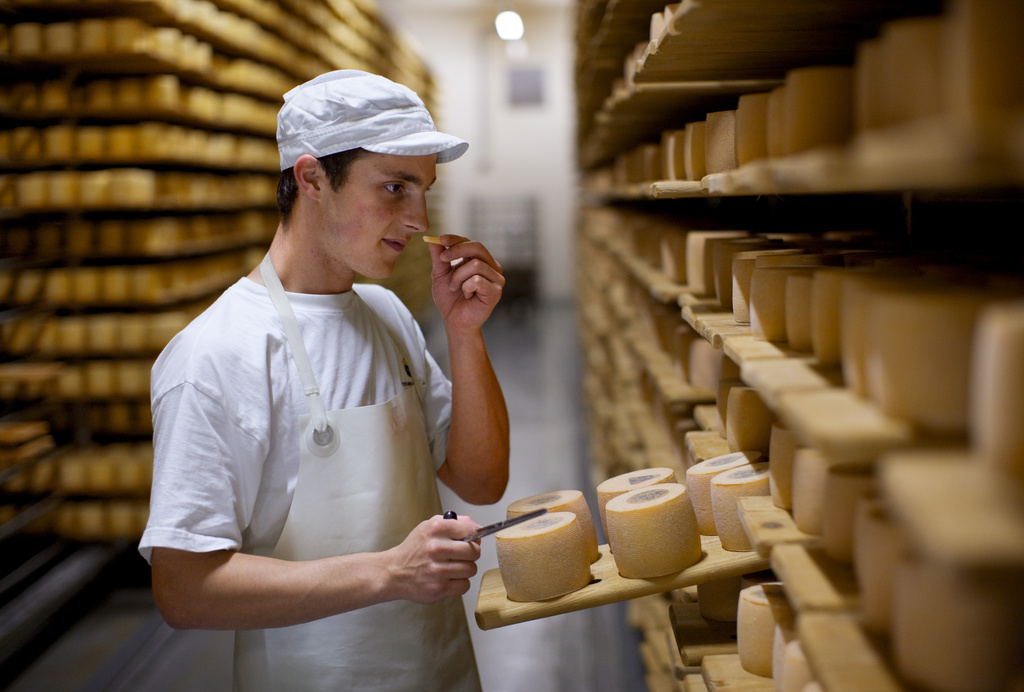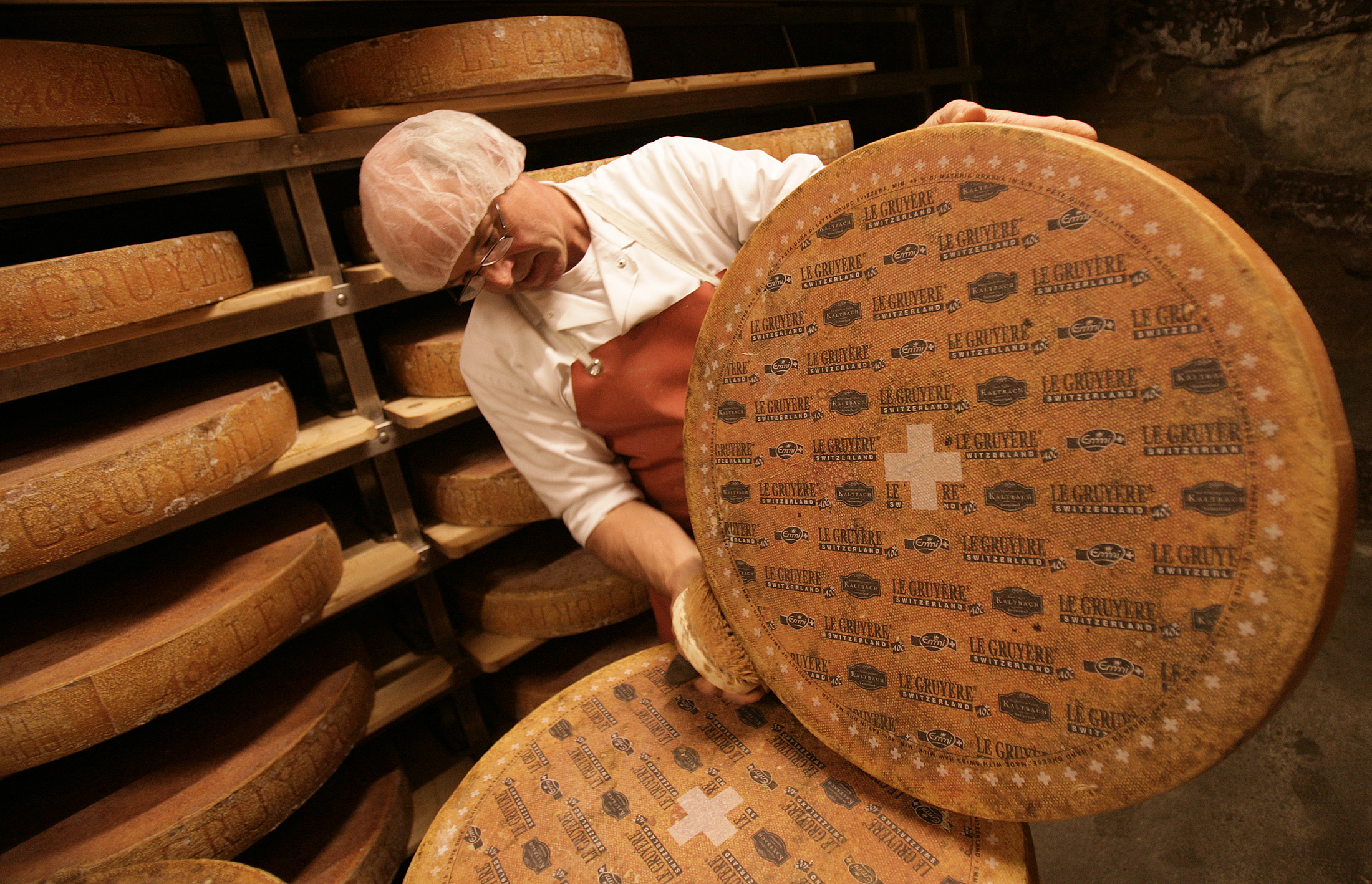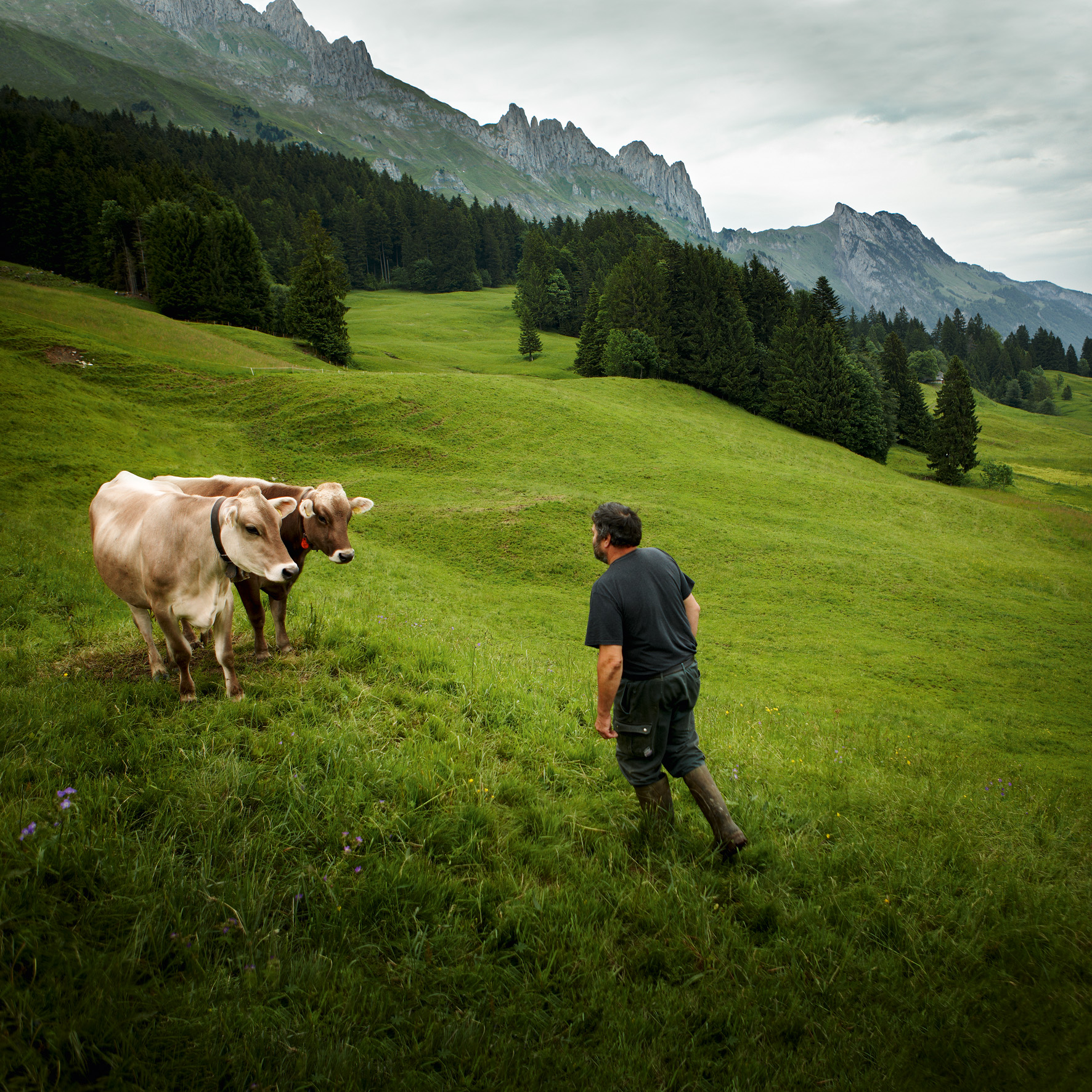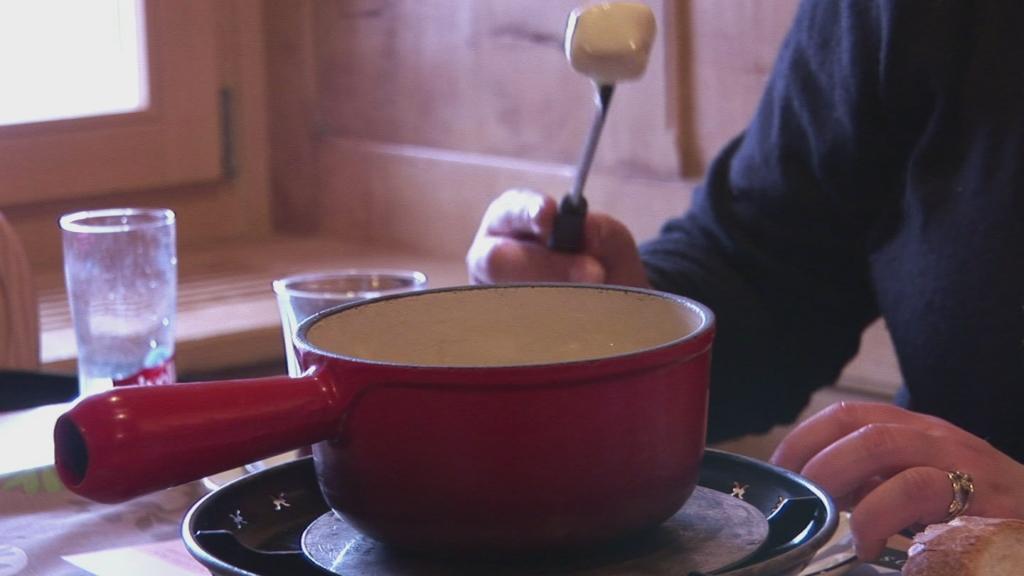Protected status helps cheese exports

The increasing popularity of special regional foods has helped soften the impact of the economic crisis for Swiss farmers.
Labels aimed at protecting and promoting regional products, including cheese, bread, as well as certain fruits, vegetables and spices were first introduced in Switzerland more than ten years ago.
The producers of Tête de Moine (Monk’s head) cheese have been going from strength to strength with sales figures increasing by 50 per cent over the past decade. Just over 2,150 tons of the typical cheese from the Jura region was sold in 2010, while the amount exported rose from 40 per cent to 60 per cent.
Tête de Moine is now among the top five Swiss export cheeses.
The increase comes despite stagnation over the past three years as markets were hit by the strong Swiss franc and the global economic crisis.
Sales of the Jura cheese even grew around 2.5 per cent in November. But overall sales figures have remained at the level of 2010, according to Olivier Isler, director of the interprofessional association of Tête de Moine producers.
Since last December the Jura cheese and other Swiss products have benefited from an additional deal between Switzerland and the European Union – its main export market. Under the agreement both sides recognise each other’s special food labels.
Marketing
Responsible for the success story of Tête de Moine is the Protected Designation of Origin label (PDO) launched in 2001.
“The label helped us improve the marketing of the product, particularly in southern European countries where the concept of PDO is quite well known,“ said Isler.
“It came with a certain quality guarantee for consumers and justified slightly higher product prices.“
The label helped maintain dynamic growth, he adds. “But it was certainly not the only factor which contributed to the success of our cheese.”
The special food label is also gaining in popularity outside countries with a traditional Latin culture heritage, such as Italy, France and Spain.
“We are beginning to make a name for ourselves in Germany, Britain and even in China,“ said Alain Farine, director of the Swiss Association of Protected Food Labels (PDO/PGI).
It appears that the labels are advantageous for product marketing.
“A PDO or PGI [protected geographical indication] product has its characteristic and its history which set it apart from standardised products,” explained Farine.
Mostly cheese
The main Swiss export product with a special label is cheese, while other protected products face more difficulties on the international market, notably because of their high prices. But this goes for agricultural products from Switzerland in general.
At the moment only dried meat from the Graubünden region has conquered a notable market share abroad with about 850 tons out of 1,850 tons annual production designated for the export market.
“The price limits our possibilities. But on a purely strategic level the Pro Carne association is trying to make the speciality known outside Switzerland. Five of the ten main dried meat producers boast the PGI label,” said Farine.
The label can also be beneficial for domestic marketing as the cases of the Saucisson Vaudois (a type of sausage from the Vaud region) and the dried meat from the Valais region show.
After these products were granted the PGI label in 2004 sales went up by 60 per cent.
“Even the producers were surprised to see the increase,” said Farine. He adds that there is a certain logic to the favourable growth rates.
Strategy
“These special labels are not necessarily subject to a product standardisation, as you might think. This allows us to improve the level of quality and eliminate undesirable producers.”
A label in itself is hardly enough. The producers of the Saucisson Vaudois and the Valais dried meat joined forces for promotion and marketing.
“What you need is a clear strategy and the necessary means to reach your ambitious goals,” said Farine.
Several smaller agricultural food producers were keen to receive a special product recognition without trying to seek cooperation with other competitors across the sector.
Risk
Farine recalls the failure of the Saucisse d’Ajoie – a sausage from the Ajoie region in northwestern Switzerland.
Local butchers asked for the PGI label to protect the typical small sausage and fend off other competitors in the region.
“Initially there were about 15 different producers, now they are down to nine. The market is stagnating and the butchers do not have the financial means to pay for a specialist in charge of marketing,” he said.
Farine is convinced that it would have paid off to set more ambitious goals at the beginning and to seek the PGI label for the sausage production for the entire territory of canton Jura and not just the Ajoie region.
There is even a risk that the label protection can hinder adaptation to fast moving consumer needs and innovations.
“Take the example of Tête de Moine. We are not allowed to make a probiotic variety of that cheese [containing live microorganisms allegedly boosting the immune system], even if there is a trend towards such products,” said Isler of the Tête de Moine association.
“Every respected label comes with certain liabilities. It is our task to tell consumers what these obligations are and to make them understand their value, which is reflected in the quality of the product,” he added.
An accord between the 27-nation bloc and non-EU member Switzerland on the mutual recognition of the PDO and PGI labels came into force last December.
The agreement is aimed at granting legal protection for producers.
It protects 22 Swiss products on the EU market and more than 800 products from EU countries in Switzerland.
A notable exception is the Emmental cheese label which is only protected in Switzerland.
The World Trade Organization says Emmental is a more general trademark for the typical cheese with big holes and not tied to the Swiss region of the same name.
Abricotine (alcoholic drink)
Berner Alpkäse/Berner Hobelkäse (cheese)
Bloder Sauerkäse (cheese)
Genevois cardoon (vegetable)
Damassine (alcoholic drink)
Emmental (cheese)
Etivaz (cheese)
Eaux-de-vie de poire du Valais (alcoholic drink)
Formaggio d’alpe Ticinese (mountain cheese)
Gruyere (cheese)
Saffron from Mund (spice)
Botzi pears (fruit)
Valais rye bread
Valais raclette (cheese)
Rheintaler Ribelmais (cereal)
Sbrinz (cheese)
Tête de Moine (cheese)
Vacherin fribourgeois (cheese)
Vacherin Mont-d’Or (cheese)
(Adapted from Italian by Urs Geiser)

In compliance with the JTI standards
More: SWI swissinfo.ch certified by the Journalism Trust Initiative
















You can find an overview of ongoing debates with our journalists here . Please join us!
If you want to start a conversation about a topic raised in this article or want to report factual errors, email us at english@swissinfo.ch.